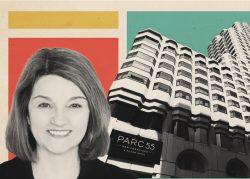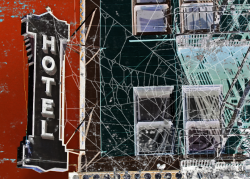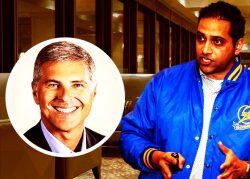San Francisco hotel occupancy during the city’s first big corporate conference of the year was a relative bust, hospitality experts say.
Regional hotel performance during the 41st annual J.P. Morgan Healthcare Conference at the Westin St. Francis hotel on Union Square was worse than in 2019, the San Francisco Business Times reported, citing a Truist Securities report that called it “mediocre.”
Hotel occupancy in the city and a slice of San Mateo County for the three-day biotech event this month was 82 percent, 85 percent and 76 percent from Monday through Wednesday, according to a night-by-night analysis from Truist Securities.
That compares to a respective 93 percent, 91 percent and 85 percent in 2019.
This year’s event drew about 8,000 guests, about 2,000 fewer than its last in-person meeting in San Francisco in 2020. The conference was held virtually in 2021 and 2022.
Maryland-based Pebblebrook Hotel Trust, owner of eight hotels in the city, told lodging analysts that its occupancy during this year’s conference was down 20 to 23 percent compared to 2020, according to Truist Securities after a briefing from Pebblebrook.
The average daily rate at its hotels was up 10 percent for the 2023 event, while revenue per available room was down 15 to 16 percent.
Truist said hotel occupancies during the event failed to create “compression” — a hospitality industry term to describe when sources of demand converge to boost rates even for out-of-the-way hotels.
“You have to have demand coming in from all sources,” Truist analyst Gregory Miller, one of the report’s authors, told the Business Times. “That’s harder to do when you don’t have the usual China or Asian-Pacific travel and, in theory, lower corporate travel particularly from the tech space.”
Despite the drop in traffic, hotels during the conference managed to charge more for rooms than in 2019. The average daily rate was up more than 10 percent each of the first two nights (to $791 and $764) and by 7 percent (to $678) on Wednesday.
Hotels generally have smaller cost margins than before the pandemic, despite staff cuts and other cost-saving measures put in place since 2020, with higher rates not keeping up with costs.
The same goes for revenue per available room, which was about even with 2019.
“If you’re a hotelier, you want to be pushing rates even with lower occupancy because the cost model has changed,” Miller said.
In 2019, the JPM event contributed $51.8 million to San Francisco’s economy, including direct spending of $36.5 million and taxes of $4.9 million, according to the San Francisco Travel Association. Numbers for the 2023 summit weren’t yet available.
The biotech summit’s return brought familiar complaints about exorbitant room rates and “dystopian” parts of the nearby Tenderloin neighborhood. The event is under contract to return to the Westin St. Francis in 2024 and 2025 as part of a 10-year agreement.
For its part, Pebblebrook told analysts the J.P. Morgan event was an encouraging start to the year for San Francisco, echoing the opinion of local travel and hotel industry representatives. The conference can fill up rooms across the Bay Area for ad-hoc meetings, providing the hotel industry a lift during the normally slow months of January and February.
According to SF Travel, the projected direct spend for Moscone Center citywide conferences in the first quarter is $117.6 million, compared with $34.3 million in that same period last year.
— Dana Bartholomew
Read more



